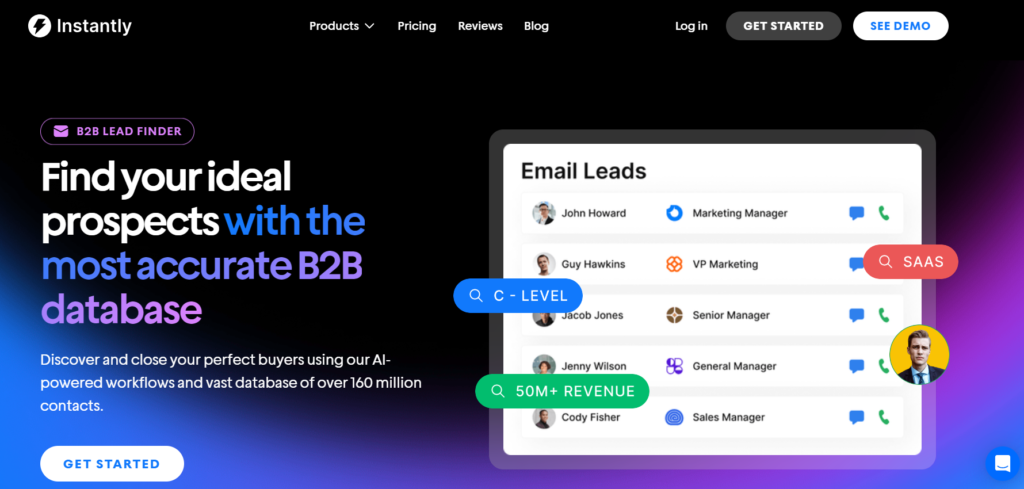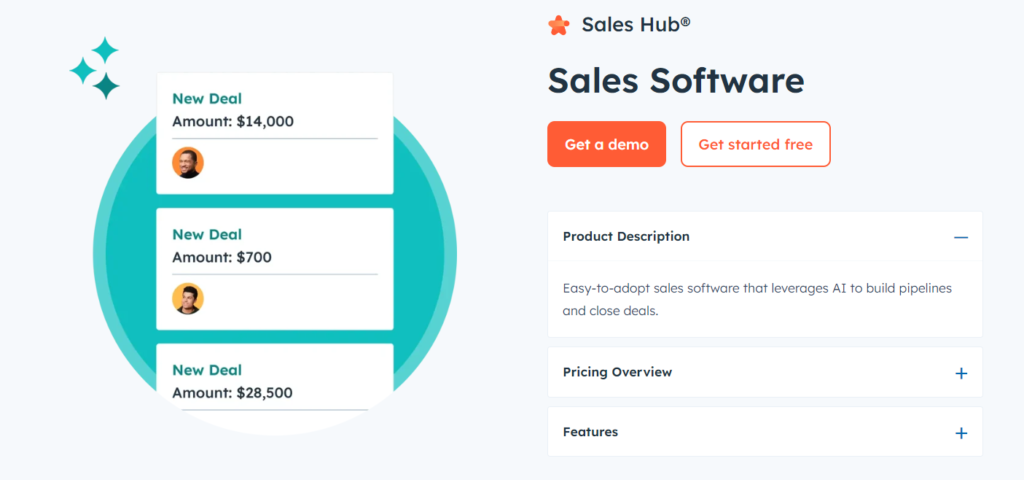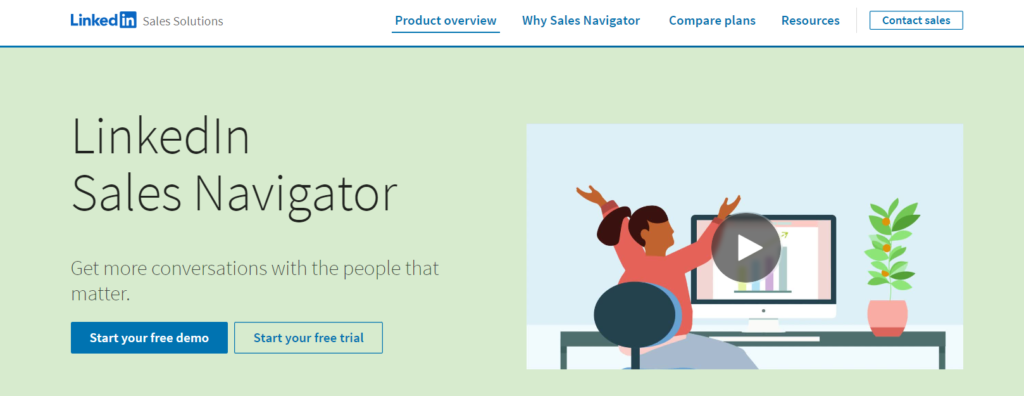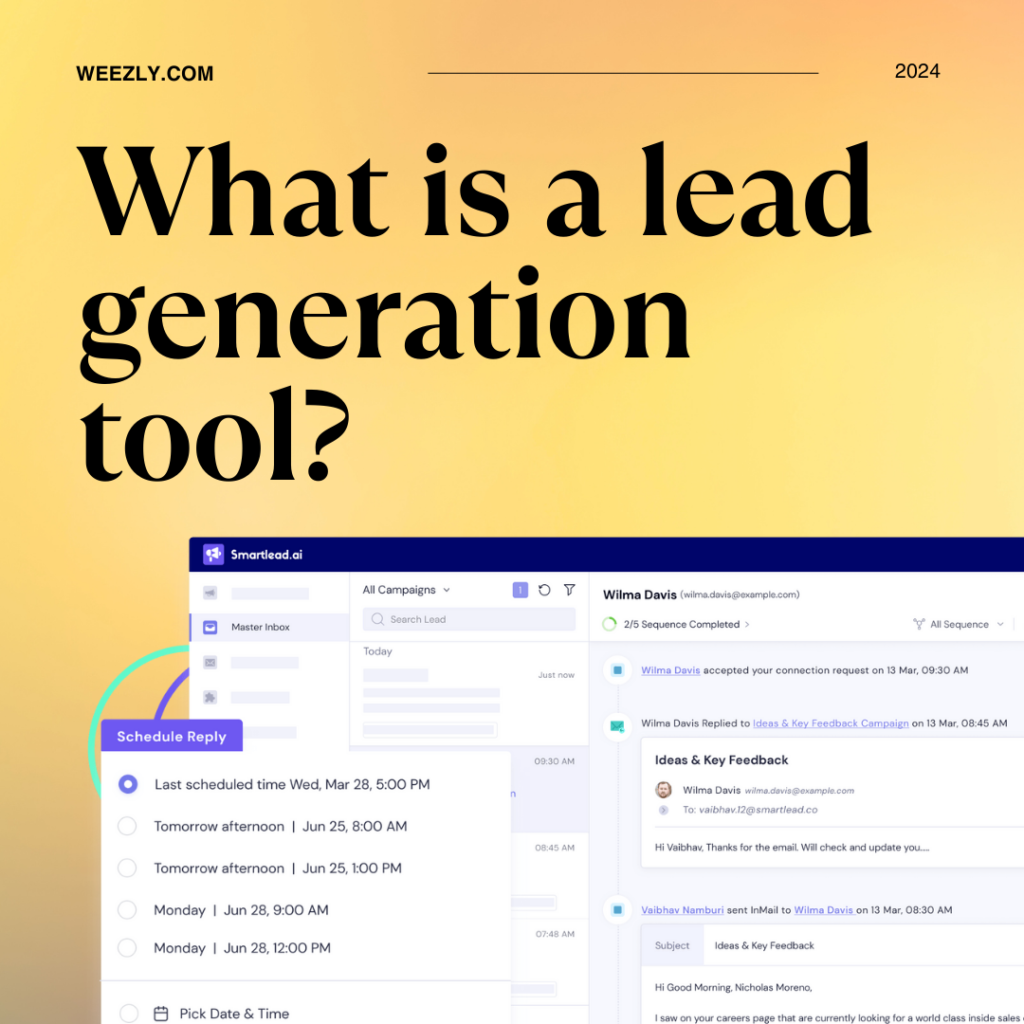In the realm of digital marketing, “lead generation” is a term frequently used to describe the process of attracting and converting strangers and prospects into individuals who have indicated an interest in your company’s product or service. But how does one effectively generate leads in today’s competitive marketplace and what is a lead generation tool? Enter the lead generation tool—a crucial component for any business looking to grow its customer base and increase sales.

What is a Lead Generation Tool?
A lead generation tool is a software or application designed to help businesses identify, attract, and capture leads—potential customers who have shown interest in a product or service. These tools streamline the lead generation process, making it more efficient and effective. By automating various tasks, lead generation tools enable businesses to save time, target the right audience, and ultimately boost their sales pipeline.
Types of Lead Generation Tools
Lead generation tools come in various forms, each tailored to meet specific needs. Here are some common types:
- Email Marketing Tools: These tools help businesses capture leads through email campaigns.
- Landing Page Builders: Used to create optimized landing pages that convert visitors into leads.
- Customer Relationship Management (CRM) Software: Helps manage and analyze customer interactions and data throughout the customer lifecycle.
- Social Media Tools: Platforms that help capture leads through social media engagement.
- Content Marketing Tools: Assist in creating and distributing valuable content to attract potential leads.
Key Features of Lead Generation Tools
When selecting a lead generation tool, it’s important to consider key features that will help maximize efficiency and effectiveness:
- Automation: Automates repetitive tasks, allowing businesses to focus on more strategic activities.
- Integration: Easily integrates with other marketing and sales tools.
- Analytics and Reporting: Provides insights into lead generation performance and ROI.
- Customization: Offers customizable templates and workflows to suit specific business needs.
Benefits of Using Lead Generation Tools
1. Improved Efficiency and Productivity
One of the most significant benefits of using lead generation tools is the improvement in efficiency and productivity. By automating repetitive tasks, such as email follow-ups and data entry, businesses can save valuable time and resources. This allows marketing and sales teams to focus on more strategic activities, such as developing targeted campaigns and nurturing high-quality leads.
2. Enhanced Targeting and Personalization
Lead generation tools enable businesses to gather detailed information about their prospects, allowing for more targeted and personalized marketing efforts. By understanding the needs, preferences, and behaviors of potential leads, businesses can tailor their messaging and offers to better resonate with their audience, ultimately increasing conversion rates.
3. Better Lead Management and Nurturing
Effective lead generation tools provide robust lead management and nurturing capabilities. This includes features such as lead scoring, segmentation, and automated workflows that ensure leads are properly categorized, prioritized, and nurtured throughout the sales funnel. By maintaining a well-organized and streamlined lead management process, businesses can improve their chances of converting leads into customers.
4. Data-Driven Decision Making
With advanced analytics and reporting features, lead-generation tools provide valuable insights into the performance of lead-generation campaigns. This data can help businesses identify what strategies are working, what areas need improvement, and how to optimize their efforts for better results. By making data-driven decisions, businesses can continuously refine their lead-generation strategies to achieve greater success.
How to Choose the Right Lead Generation Tool

1. Identify Your Business Needs
The first step in choosing the right lead generation tool is to identify your specific business needs. Consider factors such as your target audience, marketing goals, budget, and existing technology stack. By understanding your unique requirements, you can narrow down the options and select a tool that best aligns with your objectives.
2. Evaluate Features and Capabilities
When comparing different lead generation tools, it’s important to evaluate their features and capabilities. Look for tools that offer the key features mentioned earlier, such as automation, integration, analytics, and customization. Additionally, consider any industry-specific features that may be relevant to your business.
3. Assess Ease of Use and Support
The ease of use and level of support provided by the lead generation tool is also crucial. Choose a tool that has an intuitive interface and offers comprehensive training and support resources. This will ensure that your team can quickly learn how to use the tool and maximize its potential.
4. Consider Pricing and ROI
Finally, consider the pricing structure and potential return on investment (ROI) of the lead generation tool. While it’s important to choose a tool that fits within your budget, don’t sacrifice quality for cost. Instead, focus on the value the tool can provide in terms of improved efficiency, better targeting, and increased sales.
Top Lead Generation Tools to Consider
Let’s explore some of the best tools.
Instantly.ai

Instantly.ai is a robust solution crafted to streamline businesses’ cold email outreach and enhance response rates. By prioritizing personalized email campaigns, it’s perfect for generating top-notch leads.
It features automated email sequences, customizable templates, real-time analytics, A/B testing for campaign optimization, and much more.
HubSpot

HubSpot is a leading inbound marketing and sales platform that offers a comprehensive suite of lead-generation tools. With features such as email marketing, landing page creation, CRM integration, and advanced analytics, HubSpot helps businesses attract, engage, and convert leads effectively. Its user-friendly interface and robust support resources make it a popular choice for businesses of all sizes.
LinkedIn Sales Navigator

LinkedIn Sales Navigator is a powerful lead generation tool that helps businesses capture leads through social selling on LinkedIn. With advanced search and filtering capabilities, LinkedIn Sales Navigator enables businesses to identify and connect with potential leads based on specific criteria. It also provides insights into lead engagement and activity, helping businesses nurture and convert leads more effectively.
READ MORE: THE BEST B2B LEAD GENERATION TOOLS IN 2024
Psychological Insights for Effective Lead Generation
Understanding the psychology behind lead generation can significantly enhance your strategies. Here are some psychological principles that can help improve lead-generation efforts:
- The Principle of Reciprocity
The principle of reciprocity suggests that people are more likely to give back when they receive something first. In the context of lead generation, this means offering something valuable to your prospects, such as a free eBook, a webinar, or a consultation. By providing value upfront, you increase the likelihood that potential leads will feel compelled to reciprocate by providing their contact information.
- The Power of Social Proof
Social proof is a psychological phenomenon where people look to the actions of others to determine their own behavior. By showcasing testimonials, case studies, and user reviews, you can leverage social proof to build trust and credibility with potential leads. When prospects see that others have had positive experiences with your product or service, they are more likely to be interested and provide their contact information.
- The Authority Principle
People tend to follow the advice and recommendations of perceived authorities or experts. By positioning yourself or your business as an authority in your industry, you can enhance your lead-generation efforts. This can be achieved through content marketing, speaking engagements, and thought leadership. When prospects view you as an expert, they are more likely to trust your recommendations and provide their contact information.
- The Consistency Principle
The consistency principle states that people are more likely to follow through with commitments that align with their previous actions or beliefs. In lead generation, this can be applied by asking for small commitments first, such as subscribing to a newsletter or downloading a free resource. Once prospects have made a small commitment, they are more likely to make larger commitments, such as requesting a demo or signing up for a trial.
Implementing a Lead Generation Tool: Best Practices
Set Clear Goals and Objectives
Before implementing a lead generation tool, it’s important to set clear goals and objectives. Define what you want to achieve with your lead generation efforts, such as the number of leads you want to capture, the quality of leads, and the expected conversion rates. Having clear goals will help you measure the success of your lead generation efforts and make any necessary adjustments.
Integrate with Existing Systems
To maximize the effectiveness of your lead generation tool, integrate it with your existing marketing and sales systems. This includes your CRM, email marketing platform and any other tools you use to manage your customer data and marketing efforts. Integration ensures that all your data is connected and accessible, allowing for a more streamlined and efficient lead-generation process.
Train Your Team
Ensure that your team is well-trained in how to use the lead generation tool effectively. Provide comprehensive training and resources to help them understand the features and capabilities of the tool. This will ensure that they can maximize the potential of the tool and achieve the best possible results from your lead generation efforts.
Monitor and Optimize
Once your lead generation tool is implemented, continuously monitor
its performance and make any necessary optimizations. Use the analytics and reporting features to track key metrics such as lead capture rates, conversion rates, and ROI. Identify any areas that need improvement and make adjustments to your lead generation strategies accordingly.
Conclusion
In today’s competitive business environment, having a robust lead generation strategy is crucial for growth and success. Lead generation tools play a vital role in helping businesses attract, capture, and convert leads more efficiently and effectively. By understanding the different types of lead generation tools, their key features, and best practices for implementation, businesses can choose the right tools and optimize their lead generation efforts to achieve better results.
Whether you are a small business just starting or a large enterprise looking to enhance your lead generation capabilities, investing in the right lead generation tools can make a significant difference. By automating repetitive tasks, improving targeting and personalization, and providing valuable insights through analytics, these tools empower businesses to build a strong and effective lead-generation strategy that drives growth and success.









